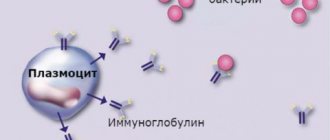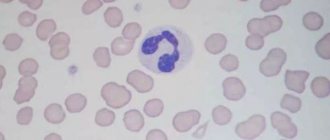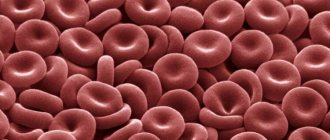What are plasma cells
Plasmocytes (or plasma cells) are a type of white blood cell that produces specific antibodies in the human body.
Each plasma cell is an activated B lymphocyte that synthesizes antibodies for one specific antigen. This is part of human immunity. When the human brain receives a signal that an antigen has entered the body, it sends a command to B lymphocytes, which settle in the lymph nodes and are converted into plasma cells. These cells produce immunoglobulins - antibodies that protect the human body from foreign substances, bacteria and viruses.
At the same time, memory T cells begin to form, storing information about the antigen. They allow the immune response to be carried out much faster in the future than with a standard reaction, because no time is wasted on identification. This is how immunity to the virus is formed. The lifespan of plasma cells is 4-5 days, while T cells have been present in the body for decades.
Cytolemma structure
Almost all cell membranes are composed of several classes of fats. The most common are cholesterol, glyco- and phospholipids. The latter consist not only of lipids, but also have a carbohydrate inclusion in the form of a “tail”. Cholesterol acts as a hard fat because it gives rigidity to the membrane and also fills the space between other lipids.
There are more rigid shells and elastic, soft ones, in which the amount of cholesterol is reduced. In addition, the substance serves as a barrier, preventing the passage of polar molecules from cell to cell. The composition and orientation of the proteins in each membrane is different, but experts have determined that the film cannot exist without them.
The structure of the plasmalemma also includes annular fats, located in close proximity to proteins and released together with them from the cell. Without these lipids, the envelope proteins cannot perform their functions. In most cases, the plasma membrane is asymmetrical, that is, in different parts of it the amount of lipids and proteins differs.
Each shell has organelles. They are sections of the cytoplasm connected to each other. The most common organelles are:
Different cells have an individual composition of organelles, but some of them are present in the vast majority of tissue units. Due to their structure, membranes are capable of selective permeability. Some substances pass through them freely, others do not. The process is regulated by the shell itself. It can be passive and active. In the first case, integral proteins enter into the reaction, in the second, significant energy costs are required.
Prevention of the condition
There are no specific interventions in medicine
, which could prevent the appearance of plasma cells in the blood. However, as mentioned above, high rates are directly related to the presence of an inflammatory process in the body, so the following recommendations can be used to prevent it:
- Complete medical examination and immunization in a timely manner.
- Improve your diet by giving up unhealthy foods and fast food in favor of healthy foods.
- To live an active lifestyle.
- Drink at least 1.5 liters of water per day, which will help improve metabolic processes.
- Spend more time outdoors.
- Support the body during cold periods with vitamin complexes.

Thus, if plasma cells are detected in a general blood test, then it is necessary to find out the cause
.
For no reason, these immune cells cannot appear in the blood. Their presence indicates the presence of some antigen against which they are fighting. Also, the cause may be cancer and autoimmune diseases, the existence of which even the person himself does not know for a long time. Therefore, if these cells are present in the blood, you should not refuse additional research.
The presence of plasma cells in a child’s general blood test may cause concern for parents
It is important to remember that the opinion about the foreign origin of these cells is erroneous. Let's consider what they are, what they are intended for, how many of them are considered normal, and what measures need to be taken if their number according to the test results is exceeded.
Chemical composition
The plasmalemma or cell membrane is a molecular elastic structure consisting of a large number of lipids as well as proteins. It allows you to separate the cell from other fluids in the body, prevent its damage, and takes part in metabolic processes. In addition, the cytolemma helps to separate the chambers of the cell to ensure its normal functioning.
The chemical composition of the plasma membrane is mainly represented by phospholipids, but other molecules are also present. This type of lipid is complex, so experts for a long time could not accurately determine the composition of the cytolemma. Each phospholipid has a hydrophilic part and a hydrophobic part. The first is the head of the molecule and faces outward, the second is the tail and faces inward.
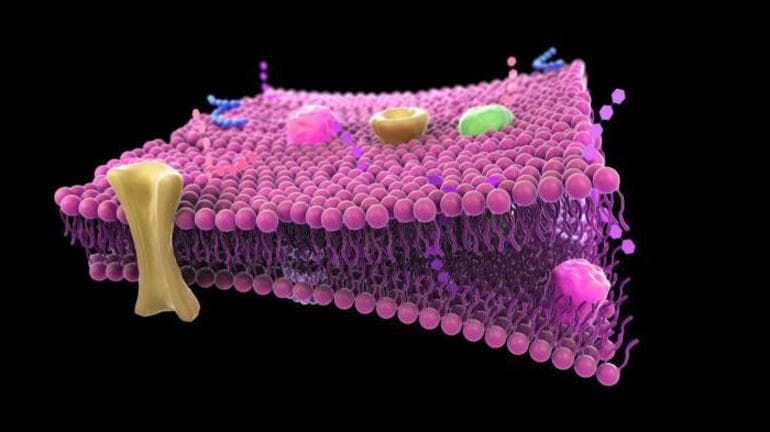
For most living organisms on the planet, the chemical composition of the membrane is very similar, as is its structure. However, there are exceptions. In some organisms it is formed by glycerol and other alcohols. The proteins inside the biological membrane can be different. The most common are the following:
- Integral proteins penetrate the film right through, so they can be inside and outside the cell. Their number in the composition is greatest.
- Semi-integral proteins can be embedded in one part into the outer or inner layer and perform the function of connecting the membrane with the cytoskeleton.
- Surface ones are located on the film or its inner layer and are not immersed in it.
Integral ones are considered the most important, because they can act as transport inclusions and receptors. Sometimes such proteins act as ion channels and maintain the constancy of the external and internal environment.
In the early years of studying the cytolemma, experts did not divide proteins into different groups, considering them equally necessary and performing the same functions. However, today, thanks to the development of technology and the advent of modern microscopes, we can say with confidence that the structure of the membrane is quite complex, even in simple plant cells.
Plasmocytes in the blood plasma cells
- Functions of plasma cells
- Normal plasma cells
- If plasma cells are enlarged
Plasmocytes (plasma cells) are a class of leukocytes that are formed from B-lymphocytes, the main function of which is the production of specific antibodies (immunoglobulins). Plasmocytes in the blood (plasma cells) are activated B lymphocytes that are capable of synthesizing antibodies specific to one specific antigen.
Functions of plasma cells
Plasmocytes are one of the types of reticular (connective) tissue cells that are characterized by basophilia of the cytoplasm. In mature plasma cells, the distribution of chromatin in the nucleus is peculiar, which gives the nucleus the appearance of a wheel.
In addition, along the periphery of the nucleus there is a light “halo” that looks like a ring or sickle. Plasmocytes range in size from 6 to 16 microns, their shape is mostly round, sometimes oval; the location of the core is usually eccentric.
Basophilia of the cytoplasm is determined by a high concentration of RNA, which is manifested when stained with pyronin and studied under a fluorescent microscope.
These cells are connected by a number of transitional forms (plasmoblasts, immature plasmacytes) by reticular cells, which are their ancestors.
The cytoplasm of reticular cells acquires, as RNA accumulates, the basophilia characteristic of plasma cells.
Plasmocytes are part of the immune system. The main function of plasma cells is the production of specific antibodies.
After the B-lymphocyte receives a signal about a specific antigen, it, settling in the lymph nodes, begins to transform into a plasma cell (plasma cell).
At the same time, the formation of memory cells begins, capable of responding to the appearance of the antigen months and years after the first invasion.
If the same antigen invades the body again, the memory cells immediately go into action and immediately begin the synthesis of antibodies in huge quantities, without wasting precious time on recognizing the antigen.
Normal plasma cells
Plasmocytes are predominantly localized in the lymph nodes, red bone marrow and spleen. Normally, there are no plasma cells in the peripheral blood in adults, but in children the content of single plasma cells is acceptable.
Plasmocytes are a cellular element that is normally found in the tonsils, in the mucous membrane of the respiratory tract, nose, and gastrointestinal tract, where their presence appears to be a response of the immune system to the effects of bacterial antigens that normally inhabit these organs. Plasmocytes are also found in the omentum, in addition to excretory functioning glands (salivary, mammary), adventitia of large vessels; their single presence is found in the spleen and lymph nodes.
If plasma cells are enlarged
If the number of plasma cells is increased in the peripheral blood, which can be reflected in the leukocyte formula and detected in a clinical blood test, this may indicate some pathological processes in the body:
- pathological processes and diseases in which antigen is present in the blood for a long time: tuberculosis, autoimmune diseases, serum sickness, septic conditions and others;
- viral diseases: measles, infectious mononucleosis, chickenpox (chickenpox), rubella;
- plasmacytoma;
- oncological diseases;
- exposure to ionizing radiation.
Normal blood sugar after eating Normal blood sugar after eating. Methodology and preparation for analysis. Diagnostic value of blood glucose analysis after meals.
Segmented neutrophilsWhat are segmented neutrophils? How to properly prepare for the analysis. Normal, increased and decreased. Indications for analysis for segmented neutrophils.
What does the ESR indicator in a general blood test indicate? The ESR indicator in a general blood test. Normal ESR in the blood, low and high levels. Indications for analysis and preparation.
Differentiation
The process of transformation of a B lymphocyte into a plasma cell goes through several stages, including immunoglobulin isotype switching and affinity maturation.
When a B-lymphocyte is activated in a lymph node, it enters the germinal center of the follicle, where it transforms into blasts—actively dividing cells—and undergoes the process of switching isotypes of immunoglobulin H-chains. In this case, somatic hypermutagenesis occurs in V genes. After the cessation of active division and movement into the light zone of the follicle, B cells undergo negative selection for binding membrane immunoglobulin antigen, which is presented by the follicular dendritic cell. After moving to the apical zone, the cells again divide and differentiate in two directions: memory B cells and plasmablasts, the precursors of plasma cells. Plasmablasts are capable of dividing and moving through the blood to the organs of the immune system, where they settle and finally differentiate into plasma cells. Most mature plasma cells do not recycle into the blood.
Literature
Wikimedia Foundation. 2010.
See what a “plasma cell” is in other dictionaries:
plasma cell
— Antibody-forming Topics of biotechnology EN plasma cell ... Technical Translator's Directory
Plasma cell plasma cell. A highly specialized cell that secretes immunoglobulins; characterized by pronounced basophilia of the cytoplasm, formed at the final stage of differentiation of B lymphocytes... ... Molecular biology and genetics. Dictionary.
— (cellula, cytus), the basic structural and functional unit of all living organisms, an elementary living system. Can exist as a department. organism (bacteria, protozoa, certain algae and fungi) or in the tissues of multicellular animals, ... ... Biological encyclopedic dictionary
CELL, in biology, the main component of which all plant and animal tissues are composed. A cell is the smallest living particle that can exist independently and has its own self-regulating chemical system.... ... Scientific and technical encyclopedic dictionary
— The cell is an elementary unit of structure and vital activity of all living organisms (except for viruses, which are often spoken of as non-cellular forms of life), possessing its own metabolism, capable of independent existence,... ... Wikipedia
cell (of an organism)
— ▲ cell organism cell is the elementary unit of all living organisms; has all the properties of a living system; can exist as a separate organism (bacteria, protozoa, algae) or as part of the tissues of multicellular organisms (fungi ... Ideographic Dictionary of the Russian Language
This term has other meanings, see Membrane A picture of a cell membrane. The small blue and white balls correspond to the hydrophilic “heads” of the lipids, and the lines attached to them correspond to the hydrophobic “tails”. The figure shows... ... Wikipedia
The presence of plasma cells in the blood indicates that an inflammation process is occurring in the human body as a result of infection or the disease was suffered recently. A highly qualified doctor is able to quickly and accurately diagnose the cause of the production of plasma cells, and accordingly prescribe the correct treatment.
Plasma cells are produced from B lymphocytes. Plasmocytes are located in the spleen, bone marrow and lymph nodes. Their appearance occurs as a result of the body's reaction to external stimuli.
Antibody production occurs in the following stages:
when an inflammation process occurs in the body, the brain sends a signal to B lymphocytes to fight the infection;
then B-lymphocytes enter the lymph nodes, moving into the plasma cell required to get rid of the problem;
then the production of the antigen necessary to fight the infection begins.
The lifespan of plasma cells is approximately 4-5 days, but there are cells that can remain in the waiting stage and live for a longer period. In exceptional cases, the residence time of plasma cells in the bone marrow can reach half a century. Thanks to this, immunity to infections is developed. In the absence of pathologies in adults, plasma cells will not be detected in a general analysis. They may rarely be present in a child.
If plasma cells are found in the blood, this means that an inflammatory process is currently occurring in the body of an adult or child, caused by an infection, or the disease was recently suffered. Such diseases include: cancer, colds, mononucleosis, dysbacteriosis, autoimmune disorders and other pathologies in which the body produces plasma cells. If the analysis reveals 1 or 2 plasma cells, then there is no reason to worry. If the number is larger, it is necessary to conduct an additional examination of the body and select the appropriate treatment.
Plasma membrane (plasmalemma)
Plasma membrane , or plasmalemma, is a biological membrane or a complex of biological membranes tightly adjacent to each other, covering the cell from the outside.
The structure, properties and functions of the plasmalemma are basically the same as those of elementary biological membranes.
❖ Structural features:
■ the outer surface of the plasma membrane contains the glycocalyx - a polysaccharide layer of glycolipoid and glycoprotein molecules that serve as receptors for “recognition” of certain chemicals; in animal cells it can be covered with mucus or chitin, and in plant cells - with cellulose or pectin substances;
■ usually the plasmalemma forms projections, invaginations, folds, microvilli, etc., increasing the surface of the cell.
■ Additional functions: receptor (participates in the “recognition” of substances and in the perception of signals from the environment and transmitting them to the cell), ensuring communication between cells in the tissues of a multicellular organism, participation in the construction of special cell structures (flagella, cilia, etc.).
Biology and medicine
Plasma cells are microscopic factories, each of which produces huge quantities of antibodies ready to fight a strictly defined antigen.
Plasmocytes, derived from B lymphocytes, are protein-synthesizing cells rich in ER elements, located near small blood vessels in the organs of the immune system, in the mucous membrane of the digestive and respiratory systems.
They produce antibodies (immunoglobulins), which determines their most important role in protecting the body.
Upon encountering and recognizing an antigen, B cells undergo characteristic ultrastructural changes, becoming lymphoblasts.
It goes like this. After stimulation by antigen, differentiating lymphoblasts appear in the germinal centers. The plasma cells formed from them are located in the medullary cords of lymphoid cells passing between the medullary sinuses.
The maturation of antibody-forming cells in areas remote from where antigenic stimulation occurred is also observed in the spleen (here plasma cells are detected mainly in the marginal zone).
Subsequently, many B lymphoblasts mature into antibody-producing cells (AFCs), which proliferate and differentiate into plasma cells in vivo. These form and release large quantities of receptor molecules in soluble form - antibodies.
Normally, plasma cells are found only in secondary lymphoid organs and tissues, and, in addition, they are quite numerous in the red bone marrow.
Antibodies produced by one plasma cell have the same antigen specificity and belong to the same immunoglobulin isotype.
Plasma cells: pathology
EPIGENETIC REGULATION OF PLASMA CELL DIFFERENTIATION
Differentiation[ | ]
Differentiation of a B lymphocyte into a plasma cell
The process of transformation of a B lymphocyte into a plasma cell goes through several stages, including antibody isotype switching and affinity maturation.
When a B-lymphocyte is activated in a lymph node, it enters the germinal center of the follicle, where it transforms into blasts - actively dividing cells, and undergoes the process of switching isotypes of the H-chains of immunoglobulins (antibodies). In this case, somatic hypermutagenesis occurs in V genes. After the cessation of active division and movement into the light zone of the follicle, B lymphocytes undergo negative selection for binding by membrane antibodies to the antigen that is presented by the follicular dendritic cell. After moving to the apical zone, the cells again divide and differentiate in two directions: into memory B lymphocytes and into plasmablasts, the precursors of plasma cells. Plasmablasts are capable of dividing and moving through the blood to the organs of the immune system, where they settle and finally differentiate into plasma cells. Most mature plasma cells do not recycle into the blood.
Carrying out analysis and deciphering it
In a person without health problems, the number of plasma cells does not exceed two cells per thousand others. Therefore, when up to 200 cells are taken for analysis, they are often not diagnosed at all. For an infant, the normal level of plasma cells in the blood is 2%. Only an increase in the number of plasma cells is diagnosed, since a decrease in their number in the blood is not detected and does not cause health problems.

The most common type of diagnosis of plasma cells is a general blood test, during which various blood pathologies, causes of dizziness, increased body temperature, lethargy and increased fatigue are identified. Material for analysis is collected from a finger or vein. Preference is usually given to the first method, it is the simplest, especially when collecting blood from a child, and less expensive financially. No special preparation is required to take the test. Blood is donated in the morning on an empty stomach.
You need to make sure that the patient has no symptoms of measles, meningitis, rubella, encephalitis, or leukemia. Timely therapy will allow you to get rid of many concomitant diseases. Often the number of plasma cells increases with infectious mononucleosis, which without proper treatment can lead to serious complications.
A blood test for plasma cells will help determine the progression of many infectious diseases, including cancer, which will allow timely treatment to begin and shorten the recovery period. With the right approach to examination, a qualified doctor will be able to easily determine the cause of the inflammatory process. A general blood test is an accessible and simple way to diagnose the level of plasma cells in the blood.
So, more details. Plasma cells are a class of white blood cells that produce antibodies. They are formed from B lymphocytes.
Some people mistakenly believe that these cells are harmful formations that signal the presence of pathology. Plasmocytes are the body’s reaction to the action of external factors. They are constantly present in it: in the lymph nodes, in the spleen, and also in the red bone marrow.
A good specialist, having detected plasma cells in a general analysis, will conclude that the patient has recently suffered from one of the infectious diseases. And also that this virus is still in the body.
Plasmocytes arise due to infection and inflammation. B lymphocytes enter the lymph nodes, where they are transformed into plasma cells, which produce antigen to fight infection.
Causes and process of appearance of plasma cells
There is a misconception that plasma cells are formations alien to the body, necessarily indicating an existing pathology. In fact, they do not enter the body from the outside, but are produced from class B lymphocytes. They are the body’s reaction to external factors and are constantly in the body - in the spleen, red bone marrow and lymph nodes.
The production of such cells is the main function of the above organs. The process of producing antibodies usually occurs as follows:
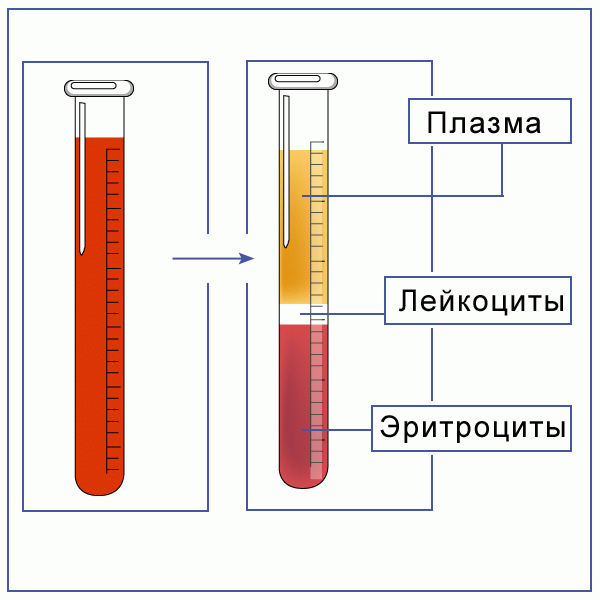
- When a particular inflammation occurs in the patient’s body, the brain sends signals to the site of B-lymphocyte production to fight the infection.
- After the brain receives a signal indicating which antigen has appeared in the body, the B-lymphocyte enters the lymph nodes, transforming into a plasma cell necessary to eliminate this problem.
- After this, it begins to produce antigens to fight the infection.
The average lifespan of plasma cells is four to five days, but there are species that can live longer while remaining in the waiting phase. These cells remain in the bone marrow until another inflammation occurs. In the waiting phase, plasma cells can live quite a long time, in some cases remaining in the bone marrow for up to fifty years. This is how immunity to certain infections is ensured.
What does the detection of plasma cells in the blood indicate?
If plasma cells are detected in a general blood test, additional examination may be necessary. To identify the specific causative agent of a particular pathology, there are diagnostic methods with the maximum degree of reliability, such as PCR, ELISA and others.
To perform such an examination, venous blood is taken to calculate, in addition to plasma cells, additional formed elements of the blood flow, which make it possible to establish a specific antigen.
The presence of plasma cells in a blood test indicates the following diseases:
- Influenza, acute respiratory diseases (ARI), acute viral respiratory infections (ARVI).
- Bacterial infections with staphylococcus, streptococcus and other pathogens.
- Septic lesions.
- Various types of infections.
- Autoimmune pathologies.
- Oncological diseases.
- Consequences of radiation.
- Plasmacytoma, mononucleosis, chicken pox, measles and others.
A clinical blood test for plasma cells is taken at the first symptoms of illness. Such signs include increased body temperature, dizziness or headache, aching joints and other eloquent indicators of the penetration of a bacterial or viral infection into the body. If at least one of the listed symptoms appears, it is necessary to establish the cause of the painful condition as soon as possible, especially when it comes to a child. Moreover, a blood test for plasma cells is a simple and accessible method of laboratory diagnosis.
If a blood test shows plasma cells, it means that you recently encountered a virus, bacteria, or there is an inflammatory process in the body. This information can be tracked even in a general blood test, and a competent therapist can easily determine the reason that could provoke the appearance of plasma cells in the body.
Why do plasma cells appear in the blood?
Do not think that plasma cells are foreign bacteria that have infected the body. Plasma cells are our body’s reaction to an external pathogen, but they are produced from B lymphocytes, which means they are constantly in the lymph nodes, red bone marrow and spleen. The main function of these organs is the production of antibodies, that is, immunoglobulins. The process looks something like this:
- When a pathological process develops in the body, the brain sends signals to places where B lymphocytes accumulate.
- After receiving a signal indicating a specific antigen, the B lymphocyte settles in the lymph nodes and begins to transform into a plasma cell, which is necessary to eliminate this type of problem.
- At the end of the transformation process, the plasma cell begins to synthesize antibodies to the specified antigen.
- Most plasma cells live for about 3-4 days before they die, but some enter a waiting phase. These plasma cells are concentrated in the human bone marrow. These memory cells are activated as soon as antigens of the same type enter the body again. The lifespan of such plasma cells can be 40-50 years. They provide resistance to some infectious diseases.
What do plasma cells indicate in a blood test?
Normally, a general blood test should not contain plasma cells; in children, single indicators of these cells are acceptable. If plasma cells are detected in adults, it means that one of the following diseases has been suffered or is currently relevant:
- rubella;
- measles;
- chickenpox;
- mononucleosis;
- ARVI, acute respiratory infections, influenza;
- serum sickness;
- septic conditions;
- infectious diseases of various origins;
- infection with bacteria of streptococcus, staphylococcus, candida and others;
- autoimmune diseases;
- tuberculosis;
- oncological diseases;
- plasmacytoma;
- exposure to ionizing radiation.
If plasma cells are elevated, additional tests should be taken and symptoms studied to establish a diagnosis. However, you shouldn’t worry too much - after suffering from a cold, for example, plasma cell counts persist for several days.
- Privacy Policy
- Terms of use
- Copyright holders
- Adenoma
- Uncategorized
- Gynecology
- Thrush
- About blood
- Psoriasis
- Cellulite
- Ovaries
What do plasma cells indicate in tests?
If the patient is in normal health, a blood test will not show plasma cells. Sometimes children may have such cells, but adults should not have them.
Otherwise, the doctor will draw conclusions that the patient has certain infections in the body. Most likely, such a patient has recently suffered or has not yet fully recovered from the following diseases:
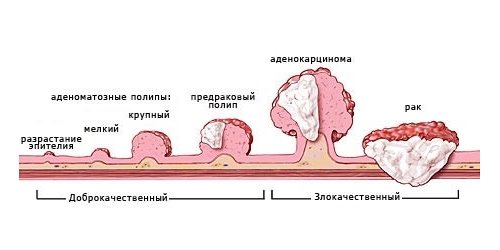
- Cancer.
- Cold.
- Mononucleosis.
- Dysbacteriosis.
- Autoimmune problems.
- Other diseases to which the body responds by producing plasma cells.
If there are one or two cells in the blood, there is no need to worry. If there are more of them, the doctor will prescribe proper treatment. Typically, a comprehensive diagnosis is prescribed in order to determine the patient’s health condition in more detail and prescribe the necessary treatment as quickly as possible.
But don't worry too much, as plasma cells can be in the blood even after a common cold.
Normal plasma cells and how to identify them
A healthy person has few plasma cells. Usually there are no more than one or two plasma cells in the blood per thousand others. That is why, when up to two hundred cells are taken for research, plasma cells often do not detect them at all.

As for newborns, it is considered normal for them to have 1-2% of such cells in the blood.
Thus, doctors diagnose only an increase in the number of plasma cells, while their decrease is not diagnosed, since it is normal and does not cause health problems.
Doctors identify plasma cells during a general blood test. This is the main type of blood diagnostics, during which a variety of blood diseases are identified, as well as the causes of sudden dizziness, a sharp increase in body temperature and a frequent feeling of weakness throughout the body.
For a general analysis, blood is taken from a finger or from a vein. The first method is used more often, as it is simpler and cheaper.
The patient does not need to prepare particularly for such an analysis. It is only important to come to the hospital in the morning and not have breakfast beforehand, so that the analysis shows the most correct result.
Analysis process
To take a sample, the doctor uses a scarifier - a special tool with which you can easily prick your finger, most often the ring finger.
The doctor punctures the finger and a drop of blood flows out. After this, a long thin flask is taken, where the blood is collected through a pipette.
Next, laboratory tests are carried out, the number of cells is counted under a microscope, including identifying plasma cells in a general analysis.
After the analysis and its comprehensive study, the test results are given to the patient or transferred to the attending physician. He makes a qualitative interpretation of the results, finding out whether everything is normal and what treatment is needed to reduce the number of plasma cells and take the necessary measures to treat the disease they indicate.
As for the timing of the analysis, it is only one day. But if the patient has chosen a small laboratory for the analysis, then they sometimes delay the blood test a little, and therefore the wait may be a little more than one day.
A blood test, depending on the laboratory and the patient’s preferences, can be performed both in the clinic where he is being treated, and in any laboratory, with the condition that the results will be handed over to him and transferred to the specialist independently.
What threatens the content of plasma cells in the blood?
As already noted, plasma cells are not found in a healthy person. Therefore, their content in a general blood test should alert the doctor and raise a number of questions.
One of the main reasons for the appearance of plasma cells in the blood is infection. So immediately after deciphering the analysis, the doctor must prescribe a comprehensive diagnosis of the patient’s body in order to understand the cause of the anomaly.
It is necessary to check for signs of measles, rubella, meningitis, and leukemia. Timely treatment will save you from a lot of problems in the future. Especially often, the number of plasma cells increases in infectious mononucleosis, which, without proper use of the necessary medications, can lead to serious consequences for the patient.
Disease prevention
There is no effective prevention for plasmacytosis, but early detection will help you receive treatment on time and increases the chances of recovery.
Plasmacytoma and myeloma are related cancers. In these diseases, plasma cells in the bone marrow—plasmocytes—grow. Plasmacytoma most often appears as an isolated bone tumor, but sometimes it can be multiple. Such lesions are characterized by bone destruction, but the bone marrow remains intact. Over time, plasmacytoma spreads to many places in the bone marrow and then develops into multiple myeloma. This disease is more common than plasmacytoma. It affects the bone marrow cells of the vertebrae of the spine, ribs, sternum and skull bones. Pale pink or gray nodules of tumor tissue appear, dissolving the surrounding bone tissue.
Symptoms of the disease are detected only when pain appears. In rare cases, the tumor spreads to the spleen or lymph nodes. When a tumor appears, the number of plasma cells increases, which are an important part of the body’s immune system, because they produce immunoglobulins that recognize and destroy “strangers” that have entered the body - bacteria, viruses, etc. “Unhealthy” plasma cells also produce immunoglobulins, but at the same time they also produce paraproteins - proteins similar to immunoglobulins, but formed only from their “fragments”.
The meaning of the cell membrane
If you carefully study the structure and functions of the plasma membrane, you can understand its role and significance in the normal functioning of the entire organism. After obtaining accurate information about the operation of the membrane, scientists were able to confirm its necessity and primary role in the body.
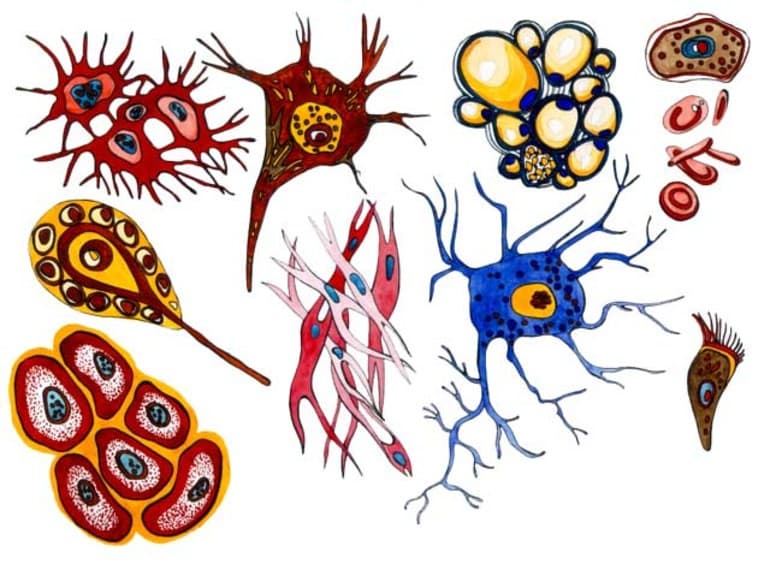
All organs of animals and humans are composed of cells, so the palasmalemma is most important for the whole organism . When it is damaged, the cell is unable to exist normally, and a whole chain of processes is disrupted. That is why specialists today study the cytoplasmic membrane, its functions and the processes in which it takes part.
Previous
BiologyLysosomes in biology - structural features and main functions
Next
BiologyMonohybrid crossing - basic concepts, patterns, tasks
